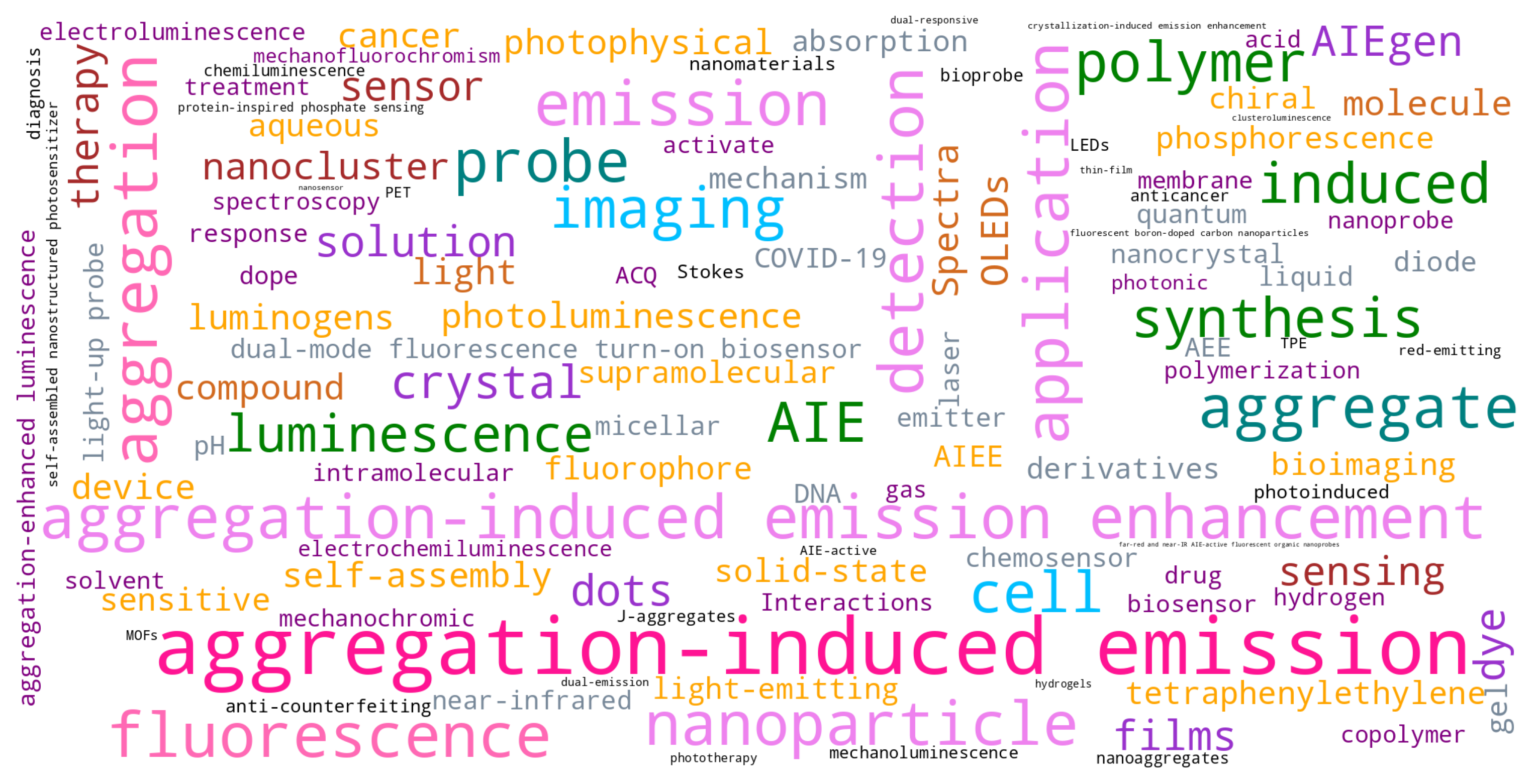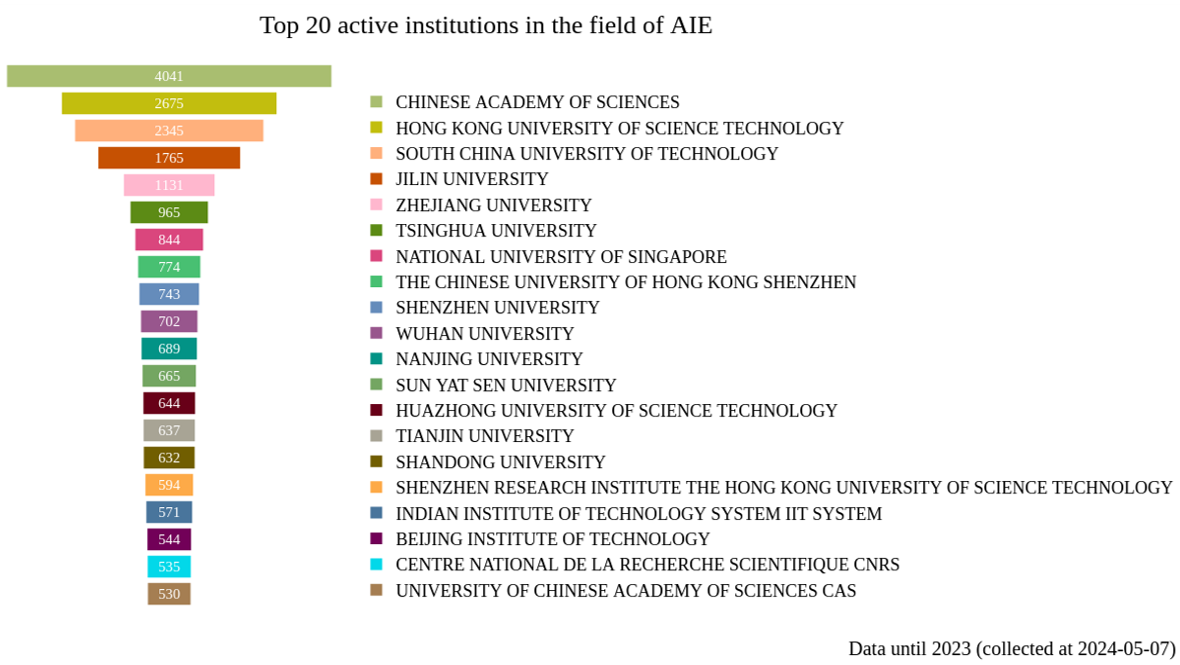In 2001, Ben Zhong Tang found that 1-methyl-1,2,3,4,5-pentaphenylsilile does not emit light in acetonitrile. However, it emits strong green fluorescence in an acetonitrile solution containing large amounts of poor solvent (water). This phenomenon led Tang to propose the concept of aggregation-induced emission (AIE). Through subsequent research, he theorized and verified the mechanism behind AIE, called the restriction of intramolecular motion (RIM). Tang's work pioneered a new field of research. Based on the RIM mechanism, researchers constructed a large number of structurally diverse small molecules, polymers, and organometallic complexes with AIE characteristics.
Since the concept of AIE was first proposed, it has gradually grown from an idea to a field of science that attracts dedicated researchers from around the world. Many research articles and reviews have been published over the past two decades. Though several works have provided a literature overview publications of this field, as database developer, our ASBase team updated the publication statistics and analysis of the AIE researches to 2023, based on the data collected from the Web of Science Core Collection with our search strategies.
From 2001 to 2022, AIE-related research publications continued to increase rapidly. Until 2023, the total number of relevant publications from Web of Science has reached 28,000. Starting from 2013, the annual growth rate of publications also reveals an increasing trend, reflecting that AIE is an emerging field with sustained growth.

In the past decades, originated from a special experimental phenomenon, AIE research was gradually expanded to a various of applications. We have extracted frequent keywords from the article titles to create a word cloud plot, which shows that scientists have not only discussed the phenomenon, principles, and luminescence mechanisms of AIE, but have also expanded the application boundary of AIE-based materials to fluorescent probes, bio-imaging, sensing, theranostic, electronic devices. The composition of materials was no longer limited to organic small molecules. Diverse “aggregated” forms have been synthesized and discussed, including polymers, supramolecules, gels, solids, nanoparticles, and more.

Originated from Chinese scientist, the field of AIE has attracted dedicated researchers from around the world. In our statistics, more than 40,000 researchers from 118 countries and regions are engaged in the AIE and related fields. The following figure shows the 15 countries and regions with the most amounts of publications in the AIE field.

The following figures, based on our statistics, shows the top 20 active institutions in the AIE field and the 20 journals with the most amounts of related articles.


AIE research has generalized to various disciplines. The following figure shows the disciplines corresponding to the active journals.

From 2001 to 2023, the achievements of some scholars have had a profound academic impact on the AIE field. The following figure shows the 20 most productive authors with AIE publications.
